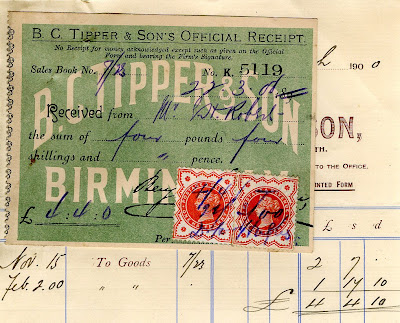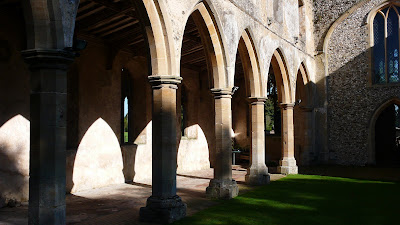 Not getting out much at the moment, as you can see. My shirts have been out on the washing line for two days now, stiff with ice like cardboard cut-outs. I might as well stack them up in the shed to thaw out. However, My Neighbour Who Knows What I Like has lifted my spirits by waving this box at me through the kitchen window. It was the answer to her Christmas quiz question, "What's the earliest sell-by-date you've seen a package?". Well, I've never seen anything better than this: 11th January 1913. Anybody out there seen one earlier? Closer inspection of this large thick cardboard box revealed it to be the container for a single automobile tyre inner tube. Dunlop recommended that you immediately take the tube out of the box and keep it in one of their Waterproof Bags, to prevent friction of the rubber against the cardboard. And if the garage hadn't sold it by the prescribed date it was to be returned to the factory in Aston Cross. Dunlop first appeared in Birmingham in 1891, and at the time of this sell-by-date were just four years away from their relocation to the simply gargantuan Fort Dunlop in Erdington. Blimey, all this from an old cardboard box now used to keep Christmas decorations in. I wonder if that intrepid pioneer motorist J.J.Hissey had a handy supply stashed away on the back of his Daimler, ready for his chauffeur/groom/wife to struggle with on the grass verges of England? Almost certainly.
Not getting out much at the moment, as you can see. My shirts have been out on the washing line for two days now, stiff with ice like cardboard cut-outs. I might as well stack them up in the shed to thaw out. However, My Neighbour Who Knows What I Like has lifted my spirits by waving this box at me through the kitchen window. It was the answer to her Christmas quiz question, "What's the earliest sell-by-date you've seen a package?". Well, I've never seen anything better than this: 11th January 1913. Anybody out there seen one earlier? Closer inspection of this large thick cardboard box revealed it to be the container for a single automobile tyre inner tube. Dunlop recommended that you immediately take the tube out of the box and keep it in one of their Waterproof Bags, to prevent friction of the rubber against the cardboard. And if the garage hadn't sold it by the prescribed date it was to be returned to the factory in Aston Cross. Dunlop first appeared in Birmingham in 1891, and at the time of this sell-by-date were just four years away from their relocation to the simply gargantuan Fort Dunlop in Erdington. Blimey, all this from an old cardboard box now used to keep Christmas decorations in. I wonder if that intrepid pioneer motorist J.J.Hissey had a handy supply stashed away on the back of his Daimler, ready for his chauffeur/groom/wife to struggle with on the grass verges of England? Almost certainly.
Berwick, East Sussex
1 week ago
























































